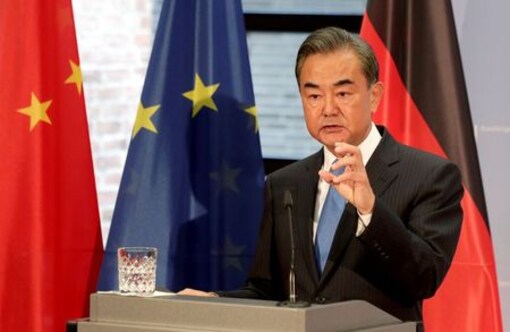China is marching forward in the race of global domination amidst plenty of geostrategic hurdles on her trajectory. The inflammatory atmosphere in the South China Sea has the potential to act as a nightmare for the nurturing— dreams of china becoming the global Master China has been giving its claims a legitimate face over the South China Sea for the past decades, but the growing involvement of the USA— a non-claimant over the water— in the shape of regional military-cum-economic pacts with neighboring nations, such as Philippine makes the quagmire subject to more complications.
The South China Sea is located on the south of China, and it is surrounded by a half dozen countries: China, the Philippines, Indonesia, Vietnam, Taiwan and Brunei. It is stretched in a maritime area of 1,400,000 sq miles from the trait of Malacca,which lies between Indonesia and Malaysia, to the Taiwan Strait. It contains nearly 250 islands, atolls, cays, shoals and reefs, including the Golden, Spratly and Paracel Islands. Furthermore, the ea is among the most strategically important maritime areas in the world where crucial sea lanes, islands and trade routes lie; and, nearly $4 trillion worth of value in capital 5s generated from the sea, and 40 percent of global liquefied Natural Gas (LNG) is transported to various countries of the world annually. Six percent of US trade also passes from this sea. This economic, military and strategic importance has made South China a nuclear flashpoint in the world.
The growing movement of China in the South China Sea is a great matter of security concerns of the other claimant countries, such as Vietnam and Philippine, bringing Washington much closer to the issue, thus transforming it from a regional to an international concern between the two mighty powers of the world. It is also one of the key reasons for the tense and bitter bilateral diplomatic relation between Beijing and Washington.
China tries to use the tool of history to justify its hegemony over the South China Sea; particularly, the “Nine Dash Line” is the instrument through which China legitimizes and legalizes its right in the eyes of international law. Nevertheless, the regional claimants in the South China Sea take the support and help of the United Nations Convention on Law of the Sea (UNCLOS) which states contiguous waters to be 12 nautical miles beyond the territorial water boundary of that particular country.
The situation in the South China Sea gives it the potential of being a nuclear flashpoint in the region. Therefore, avoiding nuclear confrontation there should be a clear demarcation of the sea limits before the eyes of the international forums so that the region must not be used for proxy purposes.
International law only allows states to enforce taxation, immigration, customs and pollution regulations within the confines of its contiguous water. The Chinese claim of 80 percent hegemony of the South China Sea encroaches on the convention dramatically. However, the claimant countries keep negating the Chinese claim and dub it unlawful.
The USA is leaving no stone unturned containing China in the South China Sea; be it the military agreements with Philippine, or the resonating international hand in various world forums, Washington is stretching its limbs not only in the South China Sea but playing an engaging role to China in the South Pacific Ocean. Washington is well aware of the fact that if it takes the right steps of containment in the South China Sea, China would have to confront discouragement in its giant economy as China is surrounded by two other regional giants, Russia and India. The latter fought wars and still engages in border skirmishes in the Tibet region. On the other hand, there is the millions in funding to the Philippines armed forces and making further engagements to equip its army with modern and sophisticated war weapons. The intermittently exchange of diplomatically harsh language and the hovering fears of a nuclear war makes the South Pacific a nuclear flashpoint between two giants trapped in a Thucydides trap.
China would never want any outsider force in the South Pacific which might place it a hurdle in its path. Approximately, 80 percent of Chinese trade occurs in this Sea. It will put maximum efforts on the regional countries to counter the hedging policy of the USA. The expansion of the Chinese navy in the sea began in 2014and still goes on today.
Furthermore, China intends to reverse the burgeoning presence of the USA, its economic rival. China bases its rationale on the Nine Dash Line which is being challenged and renounced by the interested parties; China says it has the right to exercise its hegemony over the South China Sea, therefore it throws a shadow of doubt over the claims of other countries. China continues to reinstate its claim through the Nine Dash Line narrative.
Nonetheless, the latest virtual bilateral engagement between Chinese President Xi Jinping and US President Joe Biden sheds some positive development in the relationship.
But, the Philippines has had a bit of a harsh reaction over the enhanced advancement of the troops in the sea. Beijing continues to bring forward no-strings-attached policy towards the claimant nations in order to balance the power equilibrium.
The situation in the South China Sea gives it the potential of being a nuclear flashpoint in the region. Therefore, avoiding nuclear confrontation there should be a clear demarcation of the sea limits before the eyes of the international forums so that the region must not be used for proxy purposes.























